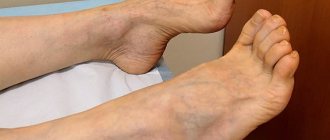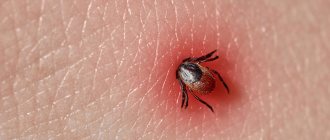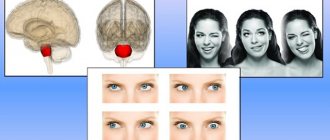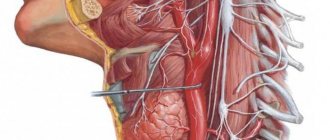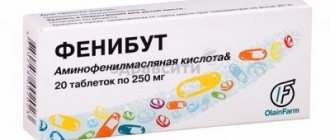One of the most important parts of living a long and happy life with Parkinson's disease is eating a balanced diet. However, it can be difficult to adhere to the recommendations of nutritionists, since this disease negatively affects the digestive functions of the body. This manifests itself in the fact that patients experience a decrease in appetite, taste, and smell; in addition, they are bothered by constipation, weight loss and nausea. The important thing here is to be persistent and take your food choices seriously. We will talk about how to eat for a sick person in this article.
Basic recommendations
The main feature of nutrition in Parkinson's is balance. One-half of the diet consists of vegetables and fruits. The other part should include carbohydrates and proteins. Cereals that contain a lot of vitamin B are ideal for nutrition. Meat and legumes are rich in protein, so they are also important.
Fast food, snacks, processed foods and fried foods should be removed from your diet. Food should be salted after cooking. Steam, oven and slow cooker are suitable for cooking. It is important that the food is prepared at home.
You should eat food at least 4-5 times a day; it is best to chop it up and distribute it into small portions.
It is also important to properly prepare the place where the patient eats. It is best to use special utensils such as weighted utensils, plastic mugs or straws. You can place a rubber mat on the table under the plate.
Reviews and results
The diet contains foods that are healthy for the body and is a healthy diet, so it should be followed constantly. It does not have any strict restrictions and from time to time patients can allow themselves to eat their favorite foods, including sweets. Limiting simple carbohydrates and fats does not adversely affect health. As a result of therapeutic nutrition, patients lose weight and improve their health.
- “... My father has had this disease since he was 55 years old. In addition to becoming helpless, he also became nervous and irritable. Everything on his part is expressed by shouting, anger and reproaches. We always try to pay attention to him and do not let him relax and withdraw into himself. We often go outside and find something interesting for him to do at home. He takes pills, the doctor said that the more active he is, the better - inaction will ruin him. He also mentioned that diet for Parkinson’s is also important”;
- “... Mom’s tremor starts when pressure surges, so we try to keep it at the same level. She also has high cholesterol, so she began to take her diet seriously: she switched to fish, seaweed, eats a lot of vegetables, and adds bran to all her dishes. I eliminated animal fats completely and switched to olive and corn oil. I'm not very sure that these measures will help reduce cholesterol, but overall my health has improved. She became cheerful, active, and interested in life. During those periods when his hands are not shaking, he even knits socks, hats and scarves for his grandchildren. It gets worse if she gets nervous, so we protect her from all troubles. We all live together, so I force her to do physical therapy and flexibility exercises every day, to prevent speech disorders - to read aloud, for memory - to learn poetry. And her grandchildren constantly support her interest in life”;
- “...Mom has been suffering from this disease for 10 years. I won’t say it’s critical, but the deterioration is noticeable every year. The main problem is periodic depression. Sometimes it drags on for a long time and there is no way to get it out. She is overcome by complete emptiness and hopelessness. The doctor prescribed Fefarin and it helped. Now fears and anxiety have disappeared and my mood has improved significantly. They didn’t make any special changes in her diet, since she had long ago switched to vegetable oils, inexpensive fish, stewed vegetables and legumes (though she rarely eats due to bloating). Dairy is limited - a glass of kefir at night, cottage cheese 2-3 times a week. She was never fond of sweets. In general, the usual diet of an elderly person.”
Diet
It is important to have a balanced diet. Medicines are taken 30-40 minutes before meals. An important component of breakfast are carbohydrates, as they have a beneficial effect on the absorption of drugs, while fats and proteins, on the contrary, interfere with drugs and interfere with absorption.
Diet principles:
- At least 4-5 meals;
- Meals consist of 3 courses and 2-3 snacks;
- Products should be easy to digest;
- The last dose should be 3-4 hours before bedtime;
- The volume of food is no more than 200-250 ml.
What you need to know about the diet for Parkinson's disease
Why is dieting so important?
This is dictated by the problems that arise with parkinsonism. Patients often experience a bad mood, tremors of the limbs, impaired motor skills and restrictions in movement, which causes a decrease in appetite. Over time, the body begins to experience a lack of vitamins. Due to involuntary hand movements and impaired swallowing reflex, patients sometimes find it very difficult to eat.
Another problem is constipation. On the one hand, Parkinson's disease usually develops in older people, who already have problems with digestion and bowel movements. On the other hand, the disease itself provokes the development of constipation.
Finally, an important point concerns the combination of taking medications and food.
Proper nutrition for this disease consists of several nuances that must be observed:
- eat the right foods;
- observe drinking regime;
- eat food at the right time;
- handle products correctly;
- observe eating technique.
Let's consider each of the points in more detail.
Cooking method and portion size
Following proper cooking methods and doctor-recommended diets will help with Parkinson's disease. It is important to preserve vitamins in food, so it is best to eat raw fruits and vegetables.
The best cooking methods are boiling and steaming, which preserve the nutrients in the food. A slow cooker is suitable for stewing.
Due to problems with chewing, it is best to eat small portions that do not tire the patient and make eating more enjoyable.
Advantages and disadvantages
| pros | Minuses |
|
|
Types of diets
For this disease the following are used:
— Mediterranean is an excellent option, as it provides the necessary amount of fiber and is suitable in terms of calories. In addition, it is optimal prevention for high cholesterol levels and chronic arterial diseases.
- Gluten-free - its effect on the disease is very controversial, since cereals containing the required amount of gluten are removed, which means that the consumption of vitamin B, which is important for a patient with Parkinson's, is reduced.
- Ketogenic - a diet in which the patient consumes few carbohydrates, a large amount of fat and an average amount of protein. According to researchers, this diet helps relieve some symptoms, such as tremors and muscle failure. But this type of diet is dangerous because it puts high pressure on the kidneys, it does not contain enough vitamins, and it causes constipation.
Why do you need a diet for Parkinson's disease?
An inevitable consequence of the disease is hand tremors and stiffness of movement due to poor motor skills. Against the background of movement disorders, a person becomes more vulnerable psychologically, and there is a loss of appetite. Long-term malnutrition leads to vitamin deficiency in the body.
In addition, the disease provokes disturbances in intestinal motility, decreased metabolism, and constipation. Involuntary tremors of the limbs lead to involuntary swallowing of food without proper mechanical processing.
To avoid negative consequences, you need to follow simple rules:
- create the right diet;
- drink enough fluids;
- eating by the hour;
- dishes must undergo preliminary heat treatment;
- food is crushed to facilitate the digestion process.
It is recommended to chop food
To obtain maximum nutritional value, you need to eat small meals and wash down your food with small sips of water. Take your time; chewing thoroughly will make the digestion process easier.
Fasting and fasting days
It is important that the diet contains the required amount of calories, but fasting for 2-4 days helps the immune system work better and speeds up the process of formation of new neurons.
How to avoid mistakes when fasting:
- Acceptable only for normal or overweight people;
- Short duration is very important - no more than one day a week;
- You should definitely consult your doctor;
- Contraindicated in patients with advanced disease.
Fasting days also help in activating the immune system and getting rid of damaged cells. In addition, doctors recommend having days without protein foods, since Levadopa medications are not compatible with protein.
Basics of proper nutrition for Parkinson's disease
Proper nutrition, both for this disease and for many other diseases, is a guarantee of good health and a quick recovery.
You should not trust “popular advice” or the opinions of friends or relatives when it comes to food choices. It would be a good idea to have an individual consultation with a nutritionist before starting a diet. He will help you prepare an individual plan and also tell you about the principles of healthy eating. Among the general rules and laws of food consumption in this disease are the following:
- The patient's diet should be varied as much as possible. So, the diet must include all categories of products. It is possible that the patient will need to take special vitamins.
- In order to recover faster, it is not enough to eat well, you must do special exercises every day, as well as follow a regimen. An experienced doctor, based on physical fitness and height, will be able to advise what weight is recommended for the patient, as well as how many calories he needs to consume daily.
- The diet of a Parkinson's patient includes food that contains fiber, as well as cereals and pasta. Rice is also recommended.
- Preference should be given to products that have a low amount of fat and substances harmful to the body.
- Also, the patient should not get carried away with sugar and reduce the amount of salt in food as much as possible. The patient is recommended to drink at least eight glasses of pure spring water daily (at least 230 ml daily!).
- It is strictly not recommended to drink alcohol, as certain drugs are generally incompatible with any such drink.
- All food groups should be as balanced as possible, and in winter and summer you should take preparations with microelements.
If the patient has no appetite...
If the patient refuses to eat at all, then we can offer some advice:
- Talk to your doctor. Very often, the main reason for the lack of desire to eat is a depressive state. It can be treated. When getting rid of such a disease, the patient's appetite significantly improves.
- Do not abuse energy and harmful drinks. You should eat only in small portions and snack frequently.
- To increase the patient’s appetite, light physical activity is recommended, at least walking more often...
To stimulate your appetite, you must follow these tips:
- Drink after meals. When you drink properly, you will not feel full before eating. Be sure to include the patient’s favorite dishes in the daily menu.
- First of all, let the patient eat foods that are high in calories. Decide how you can improve his nutrition.
Nutritional features in individual cases
1. Edema - it is recommended to reduce the consumption of liquid and salt in dishes.
2. Constipation - it is recommended to increase the volume of fluid and fiber in food. Sometimes mild laxatives can be used.
3. Nausea - appears at the beginning of drug treatment. You can offer the patient to drink water with a slice of lemon or suck on a piece of candy after taking medications.
4. Lack of appetite - the patient is offered to eat his favorite food, the taste of which helps improve the bad mood, which causes a decrease in appetite.
5. Thirst - it is recommended to drink more water, herbal tea, compote or fruit drink.
Eating equipment
The biggest problem while eating is trembling and involuntary movements of the hands. To mitigate this inconvenience, you can resort to the following recommendations:
- Plate location. It needs to be attached to the tabletop at a slight angle (tilt). The rough surface of the countertop will also make the process easier.
- Cutlery. For patients, it is preferable to eat with a spoon. It would be a good idea to wrap the utensils and the handle of the cup used by the patient with a soft cloth so that the handles become thicker and wider - this will make it easier to hold them in your hand.
- It will help a lot to avoid spilling liquid from the cup if you drink it through a straw.
In Parkinsonism, food processing is also extremely important.
This is important not only for digestion, but also to facilitate the swallowing process, which is usually impaired in patients. Boiled, steamed, stewed, baked dishes will help relieve the patient from unnecessary suffering.
The ideal option is puree and creamy consistency of dishes. But fried, dry and hard foods should be avoided as they make swallowing difficult. Foods that are not very soft should be washed down with a small sip of water.
What to do if the patient has no appetite
One of the most common causes of loss of appetite is depression. If there are accompanying symptoms, you should discuss the problem with your doctor. In this case, antidepressants may be needed, after taking which the appetite should return.
If the patient does not feel like eating, ordinary water should be replaced with more nutritious drinks - compotes, broths or liquid natural yoghurts, so that the body can receive the necessary portion of energy. Simple physical activity also helps develop appetite, unless prohibited by your doctor.
You need to plan your diet so that the menu includes any dishes that you would like to eat. At the same time, you need to eat the highest-calorie foods first. Drinks should be consumed not before meals, but after them: an abundance of liquid can deceive the stomach and give a feeling of false satiety.
Diet and menu for the week
The daily diet is divided into 5 meals: breakfast, second breakfast, lunch, afternoon snack, dinner. An approximate menu for a week on a diet for diseases of the pancreas and liver will look like this:
First day:
- a portion of low-fat grated cottage cheese with berries, viscous buckwheat porridge with a spoon of butter, weak tea.
- grated apple.
- light vegetable soup, boiled lean meat with pasta, jelly.
- weak tea and biscuits.
- boiled potatoes and steamed fish, a glass of low-fat kefir.
Second day:
- portion of pasta with boiled chicken, tea.
- grated low-fat cottage cheese with raisins.
- a portion of pureed vegetable soup with potatoes, cabbage rolls with chicken and jelly.
- one ripe banana.
- a serving of rice porridge with milk.
The third day:
- milk oatmeal, boiled fish and tea.
- light cottage cheese casserole and a handful of berries.
- milk soup with noodles, stewed vegetables with lean meat, jelly.
- weak tea and marmalade.
- hard mild cheese and pasta with a spoon of butter, compote.
Fourth day:
- a portion of buckwheat porridge and boiled chicken fillet.
- low-fat cottage cheese with half a banana.
- vegetable soup and steamed fish cutlets, compote.
- a glass of low-fat kefir with berries.
- a portion of rice porridge with grated apple and weak tea.
From the editor: Features and treatment of neurosis in children
Fifth day:
- oatmeal with milk, grated berries and jelly.
- vegetable puree.
- stewed rabbit with vegetables and compote.
- a glass of low-fat kefir and biscuits.
- boiled fish and a little buckwheat.
Sixth day:
- rice milk porridge and half a banana.
- grated apple.
- a portion of puree soup with broccoli and boiled chicken fillet, weak tea.
- a glass of low-fat kefir with grated berries.
- steamed fish with pasta and jelly.
Seventh day:
- buckwheat porridge with a spoon of butter and boiled carrots.
- apple-banana puree.
- light vegetable soup with potatoes and mild grated cheese.
- low-fat grated cottage cheese with berries.
- a portion of rice porridge with milk and half a banana.
The peculiarity of the diet for diseases of the pancreas and liver is that the patient must strictly follow the sequence of eating the dishes prescribed to him.
There should be a break of about 3 hours between meals, and at the same time you should drink plenty of fluids during the day.
Preference should be given to plain water without gas; the diet should also include compotes, jelly and natural juices from non-acidic fruits and berries, which contribute to the normal functioning of the liver and pancreas.
Dish recipes
The correct diet for diseases of the liver and pancreas should be based on the correct approach to your health and nutrition.
It should be remembered that each disease of the pancreas or liver requires the use of its own specific diet. In addition, during such a diet, you should never forget about drug treatment and take all pills and other medications on time.
Recipes for diseases of the liver and pancreas:
Buckwheat soup
- Boil 100 ml of water in a saucepan.
- Throw in buckwheat (about 50 g).
- Cook for about 15 minutes.
- When the cereal is ready, pour 400 ml of low-fat milk into the pan and stir.
- You can add a little salt to the buckwheat soup; it should be served with the addition of a spoonful of butter per serving of the dish.
Boiled perch with garnish
- Clean the fish and rinse it thoroughly under running water.
- Then divide into large pieces and boil in lightly salted water.
- At the same time, boil the rice and serve the cooked perch on a bed of rice.
- Sprinkle grated carrots or herbs on top.
Diet cake for liver and pancreas diseases
- Dilute 2 packs of gelatin in hot water, after the mixture has cooled, add low-fat homemade yogurt (500 ml) to it.
- Prepare a baking dish, cover it with foil and lay it out one by one: first a layer of finely crumbled biscuits, then a layer of yogurt with gelatin, and so on several times.
- The last layer should be made of yogurt, it must be decorated with any fruit (for example strawberries).
- Place the cake in the refrigerator for several hours; you can serve the dessert with weak tea, compote or jelly.
Shrimp soup
- Grate one potato and half a zucchini.
- Grind boiled and peeled shrimp (10-15 pieces) in a blender.
- Boil a mixture of a glass of milk and a glass of water, add vegetables to it.
- Wait until it boils again.
- Cook for another 15 minutes over low heat, stirring constantly.
- Then add greens and shrimp, cook for another 3 minutes.
- You can serve the dish with crackers.
Authorized Products
The diet is based on the following products:
- Fish and seafood. You can eat tuna, mackerel, sardine, cod, saury, and flounder. Seaweed is recommended and can be added to salads and other dishes.
Fresh vegetables. They can be consumed fresh, stewed, boiled, or chopped. Only coarse vegetables are limited - radishes, radishes, turnips.
Legumes. It is recommended to regularly consume green beans and peas. Beans can be eaten as green or grain beans.
Fruits, berries. Citrus fruits, apples, grapes, cranberries, and viburnum are especially useful.
Vegetable, cereal soups, puree soups with pureed meat or fish.
Lean meat, fish. It is better to choose chicken or turkey. It is enough to eat meat dishes once a week. It is recommended to boil and grind them.
Rye, bran bread. It is easier to consume them in the form of soaked crackers.
Cottage cheese, milk, fermented milk drinks. It is better to choose products with reduced fat content.
Chicken eggs. You can eat up to two eggs a day, preparing baked or steamed omelettes from them.
Cereals. Any kind is allowed, but it is not recommended to use pearl barley, as it is quite coarse.
Unrefined vegetable oils. Olive, flaxseed, sesame, and corn oil can be used to season dishes.
Seeds, nuts. It is recommended to consume 30-50 g per day, in crushed form, in combination with honey and dried fruits. Additionally - bran, flax seed, sesame, fenugreek - they are useful for constipation.
From the liquid - still water, herbal, green teas, rosehip decoction. You can use herbal decoctions with anti-stress and neurotrophic effects.
How to consume food?
It happens that when you have an illness, you have difficulty eating and swallowing food. To avoid such inconveniences, you need to follow the recommendations.
- The patient should sit up straight while eating.
- When receiving and swallowing, you need to lean forward a little.
- I chew food thoroughly, not taking the next portion until the previous one is swallowed.
- Portions should be small.
- You should drink it in small sips.
- Solid food must be washed down with water.
- If you have difficulty drinking, you can use a straw.
Very often, with Parkinson's disease, difficulties arise with eating due to the fact that the hands tremble greatly. To avoid this, you can make utensils for easy use (preferably a spoon). The plate should be attached at an angle to the table, the surface of which should have a rough base. To conveniently hold the devices, they can be wrapped in bandages.
It is impossible to cure this disease. At the same time, using modern medications and eating right, you can actually smooth out the symptoms, slow down the development of the disease and improve your well-being.
Useful foods for parkinsonism
The most suitable products for patients are the following:
- Vegetables. Any vegetables are very healthy. They are best consumed boiled; raw vegetables should be chopped very finely. An excellent option is vegetable puree soup with a creamy texture. It is better to make mashed potatoes from potatoes too. Beetroot and pumpkin, boiled or baked, are very useful because they prevent constipation. By the way, it is extremely useful to add fresh garlic and herbs to meat and vegetable dishes.
- Fruits and berries. You need to eat as much of them as possible. Eating fresh strawberries and strawberries is not difficult, but apples need to be cut into small pieces. Prunes are very useful, which must first be soaked so that they become soft and also finely chopped. Fruits must be peeled.
- Dairy products. Cream, sour cream, yogurt, and curd mass have a delicate creamy texture, so they are easy to eat. It is necessary to include butter in the diet.
- Egg dishes. Eggs are rich in protein and should be included in the diet. It is better to cook egg porridge, omelet or eggnog, rather than scrambled eggs, which will be more difficult for the patient to “cope with”.
- Cereals. Cereals are incredibly healthy. Oatmeal, buckwheat and rice porridge, well boiled, are especially useful. The ideal option is a messy porridge.
- Meat. The best option is poultry, fish, and veal. Stewed or boiled meat should be cut into small pieces. The liver is also very useful.
- Bakery products. Black and grain bread is rich in valuable microelements.
- Beverages. Patients can drink any drinks: tea, milk, juices, jelly, compotes. It is very useful to prepare jelly from flax seeds.
But it is better not to consume any hard and dry foods: nuts, seeds, cookies, fried foods, unpeeled vegetables with hard skins, etc. But given that nuts and seeds are beneficial to the body, they should be included in the diet, first grinding them in a blender and adding them to other dishes.
How to combine medications and food
When planning a menu, it is worth considering that some foods may reduce the effectiveness of medications. You also need to take into account the dosage schedule: in most cases, tablets are taken after meals and washed down with plenty of water.
Most often, Parkinson's patients are prescribed drugs containing levodopa. The absorption of this remedy is negatively affected by foods rich in animal protein. Any meat dishes, cheese, milk and eggs can have an effect. That is why, when using such drugs, a protein diet is strictly prohibited.
If you plan to consume “forbidden” foods, you can take the medicine not after meals, but 40-60 minutes before. This will allow the levodopa to be absorbed more quickly before animal protein can interfere with it. Also, to be on the safe side, you can eat milk and meat two hours before taking the medicine.
Parkinson's disease is an incurable disease. It cannot be completely defeated, but it can be kept under control. If all medical recommendations are followed and the condition is corrected with medication, the patient will be able to live a normal, full life.

